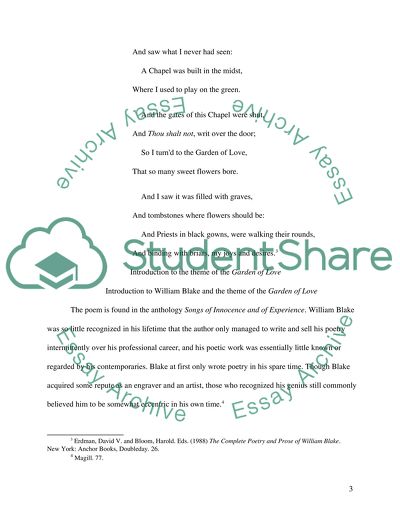Cite this document
(“Meter and Rhythm in the Poem Garden Of Love by William Blake Essay”, n.d.)
Retrieved from https://studentshare.org/miscellaneous/1512407-meter-and-rhythm-in-the-poem-garden-of-love-by-william-blake
Retrieved from https://studentshare.org/miscellaneous/1512407-meter-and-rhythm-in-the-poem-garden-of-love-by-william-blake
(Meter and Rhythm in the Poem Garden Of Love by William Blake Essay)
https://studentshare.org/miscellaneous/1512407-meter-and-rhythm-in-the-poem-garden-of-love-by-william-blake.
https://studentshare.org/miscellaneous/1512407-meter-and-rhythm-in-the-poem-garden-of-love-by-william-blake.
“Meter and Rhythm in the Poem Garden Of Love by William Blake Essay”, n.d. https://studentshare.org/miscellaneous/1512407-meter-and-rhythm-in-the-poem-garden-of-love-by-william-blake.


